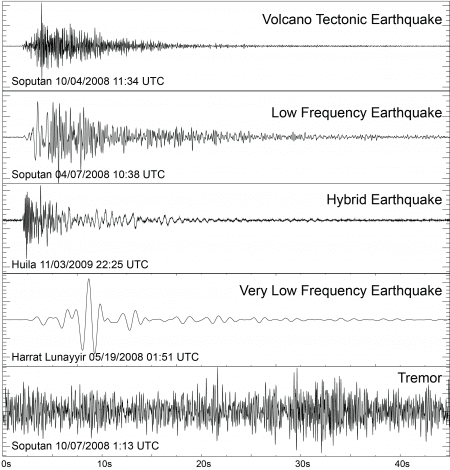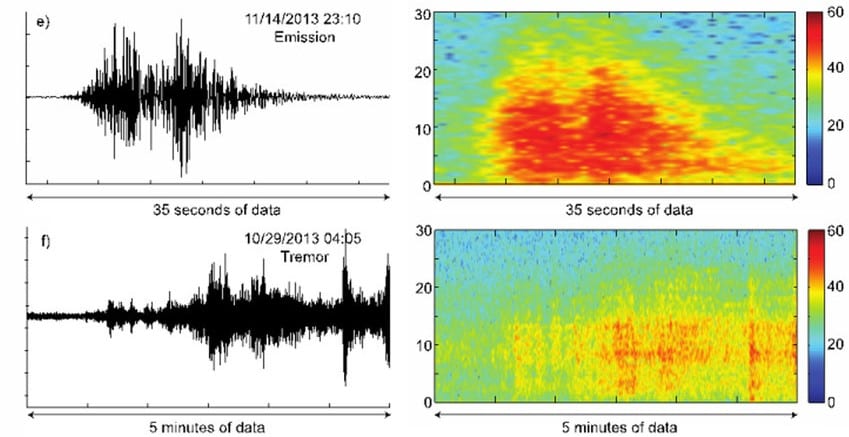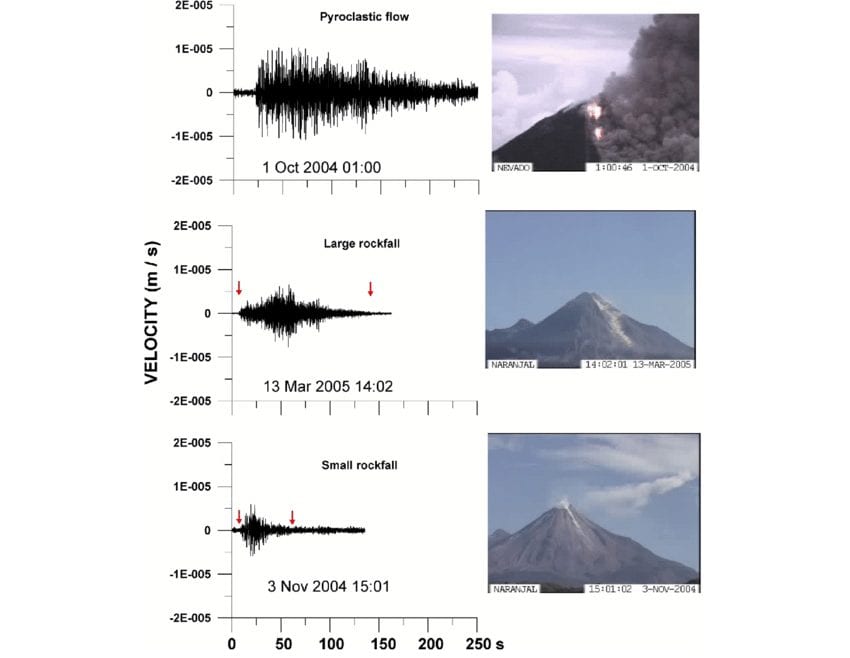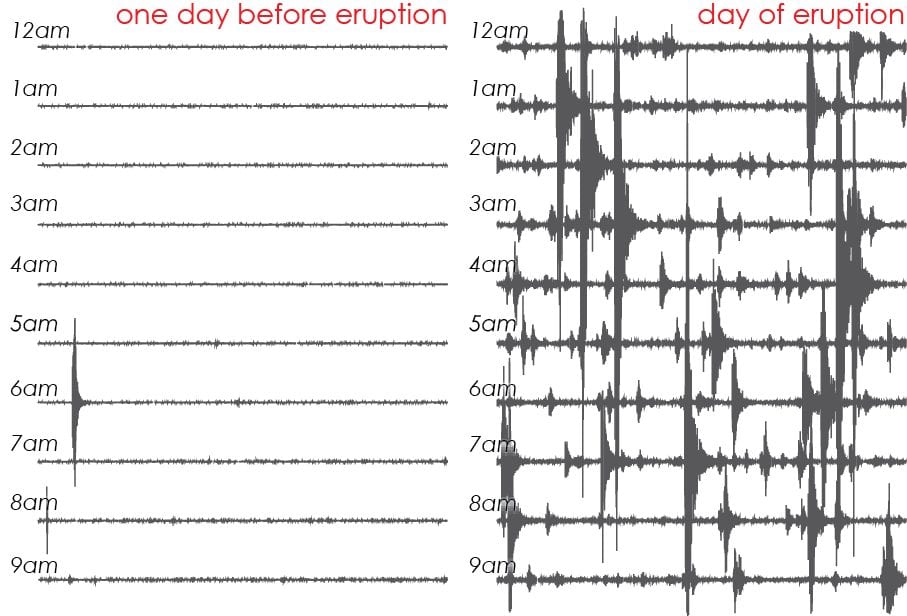Many processes in and around volcanoes can generate earthquakes. Most of the time, these processes are faulting and fracturing that does not lead to an eruption. However, volcanic earthquakes do occur as magma, and volcanic gases rise to the surface from depth, which involves significant stress changes in the crust as the material migrates upward.
Volcano seismologists study several types of seismic events to better understand how magma and gases move towards the surface.

Volcano-Tectonic (VT) Earthquakes

These types of volcanic earthquakes represent the brittle failure of rock – similar to that of tectonic quakes that occur along tectonic faults such as the El Pilar Fault, Los Bajos Fault, or the Central Range Fault. However, volcano-tectonic earthquakes can occur at volcanoes due to “normal” tectonic forces, changing stresses caused by moving magma, and the movement of fluids through pre-existing cracks. Distinguishing between these various processes can be tricky and often requires data from other disciplines (geodesy, hydrology, gas geochemistry, and geology). (USGS)
Long Period (LP) or Low-Frequency (LF) Earthquakes

These volcanic earthquakes are caused by cracks resonating as magma and gases move toward the surface. They are often seen before volcanic eruptions. Their occurrence is also part of the normal background seismicity at some volcanoes, and their occurrence does not necessarily indicate that an eruption is imminent. It is normally not possible to locate LP earthquakes. LP events can also be produced by non-magmatic processes, most notably glacier movement. (USGS)
Hybrid Volcanic Earthquakes

As the name suggests, a hybrid earthquake is somewhat a mixture between a VT and an LP. They tend to have impulsive starts but also contain a significant amount of low-frequency signals. They are thought to represent magma making its way to the surface at shallow depths and are often associated with periods of rapid dome growth. They have also sometimes been precursors to major dome collapses or switches in the direction of lava extrusion. These signals can often merge into continuous tremor, which sometimes occurs in bands several hours apart.
Tremors

This type of volcanic earthquake is a continuous high-amplitude seismic signal that can be caused by multiple processes, including long-lived resonance due to the extended flow of magma movement through cracks, continuous occurrence of VT or LP/LF events that are so closely spaced in time that they can’t be visually separated, and explosions. (USGS)

Rockfalls or Pyroclastic Flows

Rockfall or pyroclastic flow signals have often been the dominant type of seismic signal, particularly during periods of lava extrusion. They have an emergent start and a wide frequency range and are interpreted as material falling off the dome and traveling down its flanks. Signals from pyroclastic flows are similar to rockfalls but are generally of longer duration and higher amplitude.

Lahars or Mudflows

Lahars or mudflows can also create seismic signals that may be confused with pyroclastic flow signals, although they are usually of lower amplitude and longer duration. These signals usually build-up gradually and are stronger at stations close to ghauts (valleys).
Volcanic Earthquake Swarms

Most volcano-related earthquakes are too small to feel, generally quite shallow (usually within 10 km (7 mi) of the surface), and can occur in swarms consisting of dozens to hundreds of events. Most swarms usually don’t lead to eruptions, but most eruptions are preceded by swarms. Therefore, during any heightened periods of seismic activity at a volcano, seismologists work around the clock to detect subtle variations in the type, location, and intensity of seismic activity to determine whether or not an eruption may occur.





